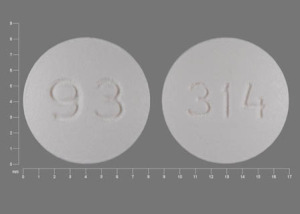Ketorolac Interactions
There are 393 drugs known to interact with ketorolac, along with 11 disease interactions, and 2 alcohol/food interactions. Of the total drug interactions, 109 are major, 277 are moderate, and 7 are minor.
- View all 393 medications that may interact with ketorolac
- View ketorolac alcohol/food interactions (2)
- View ketorolac disease interactions (11)
Most frequently checked interactions
View interaction reports for ketorolac and the medicines listed below.
- Adderall (amphetamine / dextroamphetamine)
- Ativan (lorazepam)
- Benadryl (diphenhydramine)
- Celebrex (celecoxib)
- Combivent (albuterol / ipratropium)
- CoQ10 (ubiquinone)
- Cymbalta (duloxetine)
- Flexeril (cyclobenzaprine)
- Flonase (fluticasone nasal)
- Lexapro (escitalopram)
- Lyrica (pregabalin)
- Metoprolol Succinate ER (metoprolol)
- Norco (acetaminophen / hydrocodone)
- Nurtec ODT (rimegepant)
- Ozempic (semaglutide)
- Paracetamol (acetaminophen)
- Singulair (montelukast)
- Topamax (topiramate)
- Tylenol (acetaminophen)
- Ubrelvy (ubrogepant)
- Vitamin B12 (cyanocobalamin)
- Vitamin C (ascorbic acid)
- Vitamin D2 (ergocalciferol)
- Vitamin D3 (cholecalciferol)
- Vyvanse (lisdexamfetamine)
- Wellbutrin XL (bupropion)
- Xanax (alprazolam)
- Zofran (ondansetron)
- Zoloft (sertraline)
- Zyrtec (cetirizine)
Ketorolac alcohol/food interactions
There are 2 alcohol/food interactions with ketorolac.
Ketorolac disease interactions
There are 11 disease interactions with ketorolac which include:
- GI toxicity
- platelet aggregation inhibition
- renal dysfunction
- asthma
- fluid retention
- GI toxicity
- rash
- thrombosis
- anemia
- hepatotoxicity
- hyperkalemia
More about ketorolac
- ketorolac consumer information
- Compare alternatives
- Pricing & coupons
- Reviews (469)
- Drug images
- Latest FDA alerts (10)
- Side effects
- Dosage information
- Patient tips
- During pregnancy
- Support group
- Drug class: Nonsteroidal anti-inflammatory drugs
- Breastfeeding
Related treatment guides
Drug Interaction Classification
| Highly clinically significant. Avoid combinations; the risk of the interaction outweighs the benefit. | |
| Moderately clinically significant. Usually avoid combinations; use it only under special circumstances. | |
| Minimally clinically significant. Minimize risk; assess risk and consider an alternative drug, take steps to circumvent the interaction risk and/or institute a monitoring plan. | |
| No interaction information available. |
See also:
Further information
Always consult your healthcare provider to ensure the information displayed on this page applies to your personal circumstances.


